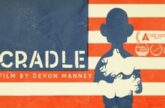Captions provided by CCTubes – Captioning the Internet! You may not know it but companies are constantly tricking, influencing and deceiving your buying habits as consumers. Basically, there are Shady Ways Companies Are Ripping You Off that you might not know about. Here are 10 ways you’re secretly tricked by companies!
Subscribe for more! ► http://bit.ly/BeAmazedSubscribe ◄
Stay updated ► http://bit.ly/BeAmazedFacebook https://twitter.com/BeAmazedVideos https://instagram.com/BeAmazedVideos◄
For copyright queries or general inquiries please get in touch: [email protected]
Credit: http://pastebin.com/3kwBpeq0
Are there videos you would love to see captioned? CCTubes makes it simple and inexpensive to get any videos you want to see with captions done. Come and see how easy it is to submit videos you want captions for. Become a member now and help us caption the internet!
Deceptive Labeling Tactics – People these days tend to be more concerned about what they’re putting into their bodies, which means taking the time to look at nutrient information on the side of their food. Most labels are organized according to quantity, with the most common ingredients being at the top. One method companies use to skew this information is the redistribution of ingredients: a product that is high in sugar, for example, could be further divided into sucrose, corn syrup, brown sugar, or dextrose, and as long as each of these types of sugar are small enough, none of them will appear at the top of the ingredient list, giving the impression that a product is healthier than it actually is. Anthropomorphism – It may just be a human quirk, but we love giving human qualities to animals or inanimate things. We give pet names to our cars, we scream at our computers when they’re not working, and we assume the weather is out to get us. In other words, when we attribute characteristics to an object, we immediately begin to empathize with it. Anti-Advertising Slogans – What’s the best way to advertise something? Well, how about not advertising it? This is the approach that some companies have taken by offering transparency. The principle behind their strategy is similar to reverse-psychology. A number of studies have found that by intimating that someone shouldn’t buy their products, they are in fact advertising honesty, and capitalizing on preconceived notions about the deceptive nature of advertisements. Misleading Visuals – We are a virtually graphic culture. We place a certain faith in what we can see, and as our dominant sense it’s what we use to shape our perceptions of what the world is like. So, it’s no surprise that marketing agencies manipulate the visuals around us on a daily basis. Misleading Commercials – The same principle as before also applies to the rampant use of CGI in commercials these days. The most blatant example of this is in car commercials. When you watch any car commercial or car scenes in movies, chances are the car you’re watching isn’t actually real. In other words, most of the cars you see have actually been created on the computer. Decoy Pricing – The decoy effect, or the ‘asymmetric dominance effect’, refers to a tendency in humans to change their preferences based on whether or not a ‘decoy’ product is introduced that is inferior to other choices. The best example of this is when a consumer is confronted with two computers with similar qualities and prices. Overpricing – Have you eaten at a fancy restaurant and noticed one of their most expensive dishes, and then decided to go with a cheaper option? You may have fallen into a marketing ploy related to a cognitive bias, called “anchoring”. Reduced Portion Sizes – Do you find yourself whining about how much air there seems to be in bags of chips these days? In the food industry in particular, reduced portions have become an increasing trend. On the surface, this might seem like a great idea, given the western worlds obesity epidemic – until you discover that the prices for products don’t reflect the diminished packet sizes. Gruen Transfer – Named after the eminent mall architect Victor Gruen, the Gruen Transfer refers to the maze-like quality which hallmarks many malls and super stores. Gruen discovered early on that creating an environment of disorientation helped to sway people into a false sense of security and expose them to products they might not have ordinarily bought. Strategic Layout of Products – When you go into Safeway or a Husky gas station, what you might not realize is that the placement of every food product has been carefully designed, tested, and implemented. Too such an extent that companies actually have representatives and quality consultants making rounds to ensure everything is where it’s supposed to be.














